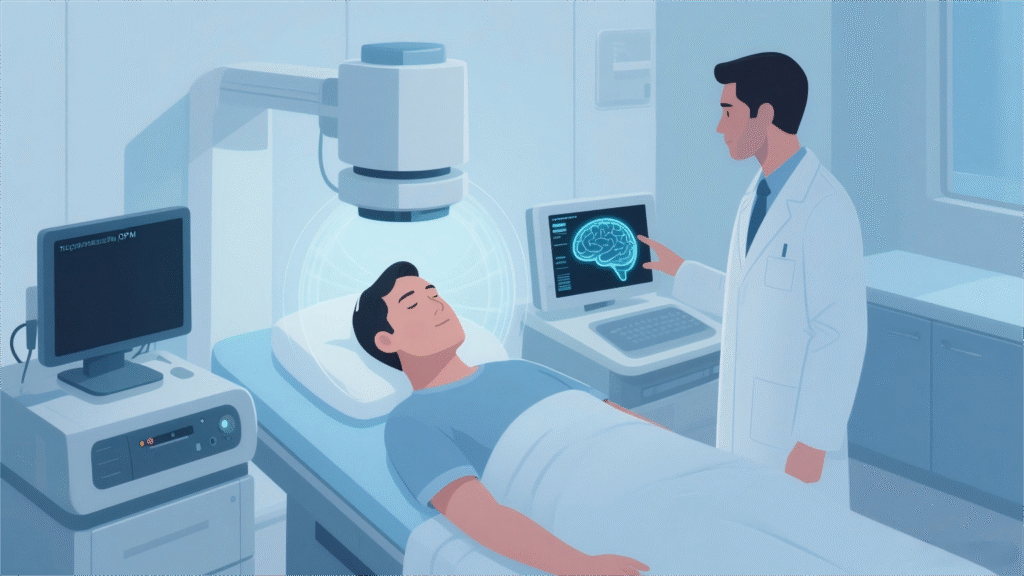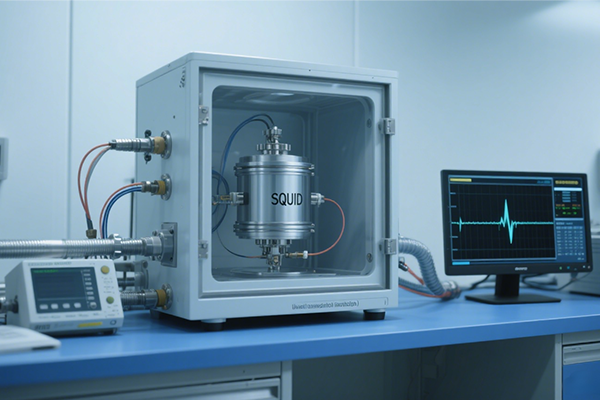1. What Are Very Weak Magnetic Fields and Why Do They Matter?
Imagine standing in a quiet room where the only sound is a pin dropping from a height of 10 stories—that’s how faint the magnetic fields we’re discussing are. Very weak magnetic fields refer to magnetic signals so subtle they measure in the range of femtotesla (fT, 10⁻¹⁵ tesla) to picotesla (pT, 10⁻¹² tesla). To put this in perspective:
- Earth’s magnetic field: ~50 microtesla (μT)
- Brain’s magnetic field: ~100 fT (1 billionth of Earth’s field)
- Heart’s magnetic field: ~1 pT (1 millionth of Earth’s field)
These invisible fields surround us—in the electrical impulses of our neurons, the magnetization of ancient rocks, and even the cosmic radiation hitting Mars. Measuring them unlocks breakthroughs in medicine, geology, and space exploration. For example, China’s Tianwen-1 Mars rover analyzed magnetic signatures in Martian rocks to reveal the planet’s geological history, while hospitals in china now use magnetocardiography (MCG) to detect early-stage heart attacks with 95% accuracy—all without radiation or contrast dyes.
2. The Tools of the Trade: How We "See" Invisible Magnetic Fields
Measuring such faint signals requires tools as precise as a watchmaker’s loupe. Here are the three most powerful technologies:
Superconducting Quantum Interference Devices (SQUIDs): The "Microscopes" of Magnetism
SQUIDs are the gold standard for sensitivity, detecting fields as small as 1 fT. They work by exploiting quantum effects in superconducting loops cooled to -269°C (colder than deep space!). Think of them as ultra-sensitive magnetic microphones listening to atomic vibrations. However, their need for liquid helium cooling makes them bulky and expensive—best suited for lab research like brain imaging (MEG) or dark matter detection.
Atomic Magnetometers: The "Portable Powerhouses"
These devices use laser-cooled atoms to measure magnetic fields. Unlike SQUIDs, they operate at room temperature and fit in a shoebox. For example, SERF (Spin-Exchange Relaxation-Free) atomic magnetometers achieve sensitivities of 0.1 fT—comparable to SQUIDs but with the portability of a laptop. Chinese scientists recently pushed this further by using dark-state spin amplification, boosting weak signals by 5,400 times—equivalent to turning a whisper into a conversation.
Fluxgate Magnetometers: The "Workhorses" of Industry
For everyday applications like industrial quality control or drone-based geological surveys, fluxgate magnetometers are the go-to. Though less sensitive (nT range), they’re durable, affordable, and energy-efficient. Imagine them as magnetic “walkie-talkies”—not the fanciest, but reliable in the field.
3. Real-World Applications: Where Weak Magnetic Fields Make a Difference
Medicine: A New Era of Non-Invasive Diagnosis
- Heart Health: MCG devices detect tiny magnetic fluctuations from heart muscle cells, identifying blockages before symptoms appear. In China, hospitals report MCG accurately diagnoses 95% of heart attacks missed by EKGs.
- Brain Science: Magnetoencephalography (MEG) pinpoints epileptic foci with millisecond precision, guiding surgeons to remove tumors without damaging healthy tissue.

Manufacturing: Precision in Every Magnet
For companies like yours producing high-performance magnets, quantum magnetometers ensure consistency. Nanjing University’s diamond NV-center magnetometer maps magnetic fields at the micrometer scale—critical for optimizing rare-earth magnets used in EV motors and MRI machines.
Space and Earth Exploration
- Deep Space: NASA’s Mars InSight lander uses magnetometers to study the planet’s core, while China’s Macau Science Satellite-1 maps Earth’s magnetic field in 4D.
- Resource Hunting: Underwater drones equipped with fluxgate sensors locate mineral deposits by detecting magnetic anomalies—like finding a needle in a haystack using its magnetic signature.
4. Choosing the Right Tool: A Practical Guide
| Need | Best Tool | Example Use Case |
|---|---|---|
| Ultra-high sensitivity | SQUID or Atomic Magnetometer | Brain imaging, dark matter research |
| Portability & low cost | Fluxgate | Drone surveys, industrial QC |
| No cooling required | SERF Atomic Magnetometer | Fieldwork, portable medical devices |
For Magnet Manufacturer, atomic magnetometers strike the best balance—offering lab-grade precision in a rugged package. Our Factory magnetometers help factories test 10,000+ magnets daily, ensuring each meets strict export standards for clients in the US, Germany, and Japan.
Conclusion
Measuring very weak magnetic fields is a remarkable blend of physics, engineering, and creativity. From SQUIDs that operate at near-absolute zero to portable OPMs, each tool has opened new doors to understanding our world—from the inner workings of the brain to the depths of space. As technology advances, these measurements will become even more precise and accessible, unlocking new discoveries in medicine, science, and industry.

